SDS011 is an air quality measurement sensor which can be used to get dust particles and smoke concentration in the air. More precisely, it can measure particulate matter (MP) concentrations in the air. It can detect the dust particles concentration between 0.3 to 10um. Most importantly, Nova PM dust sensor provides an interrupt based response when the concentration of dust particles changes in the air and the response time is less than 10 seconds. The operating voltage range is 4.7-5.3V which makes it suitable to use with standard voltage of 5 volts. Furthermore, it has a UART module and PWM outputs which can be used to get output from the SDS011 sensor.
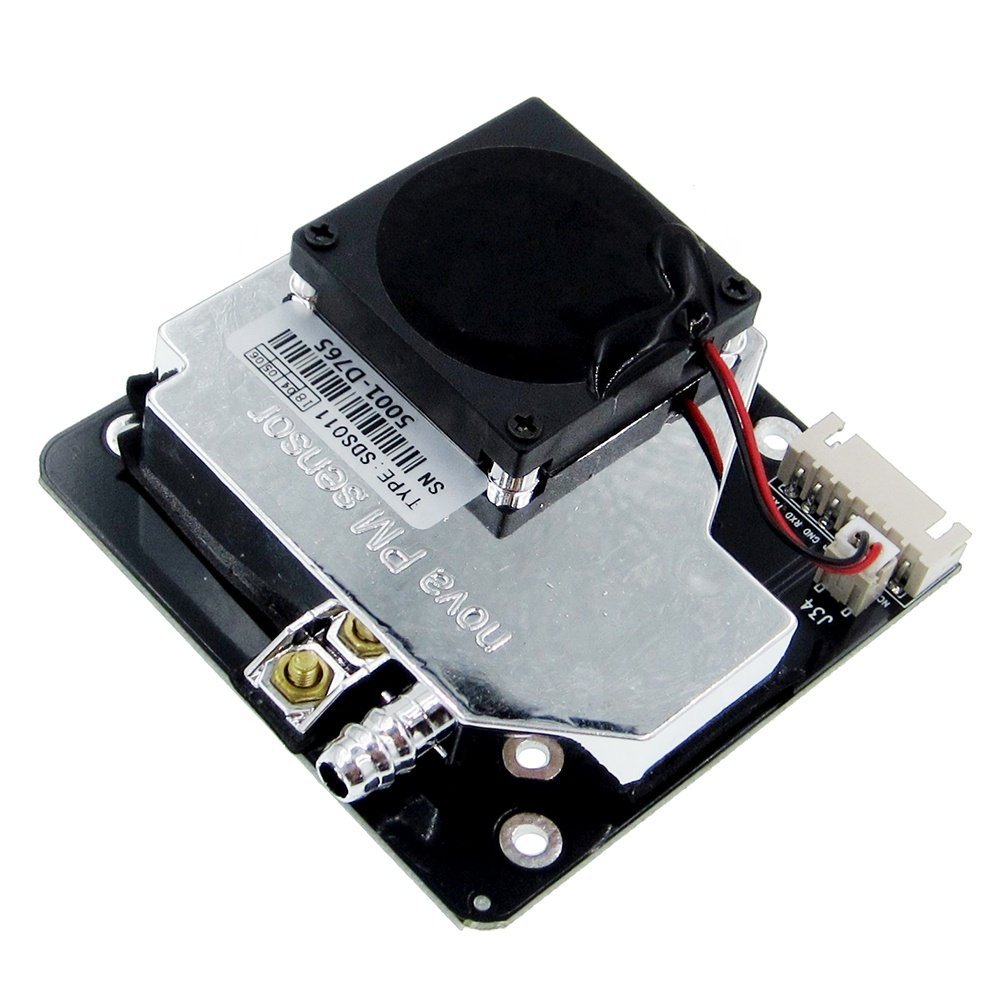
Moreover, the rated current is 70mA with ±10mA variation. Hence, the power consumption is almost one Watt.
Nova PM SDS011 Sensor Pinout
The following picture shows the pinout diagram of the SDS011 dust particle sensor. It consists of 7 pins. But to interface it with microcontrollers such as Arduino, TM4C123, PIC, 8051, or ESP32, we can use only UART pins, such as RX, TX, to get dust concentration output from the dust sensor.
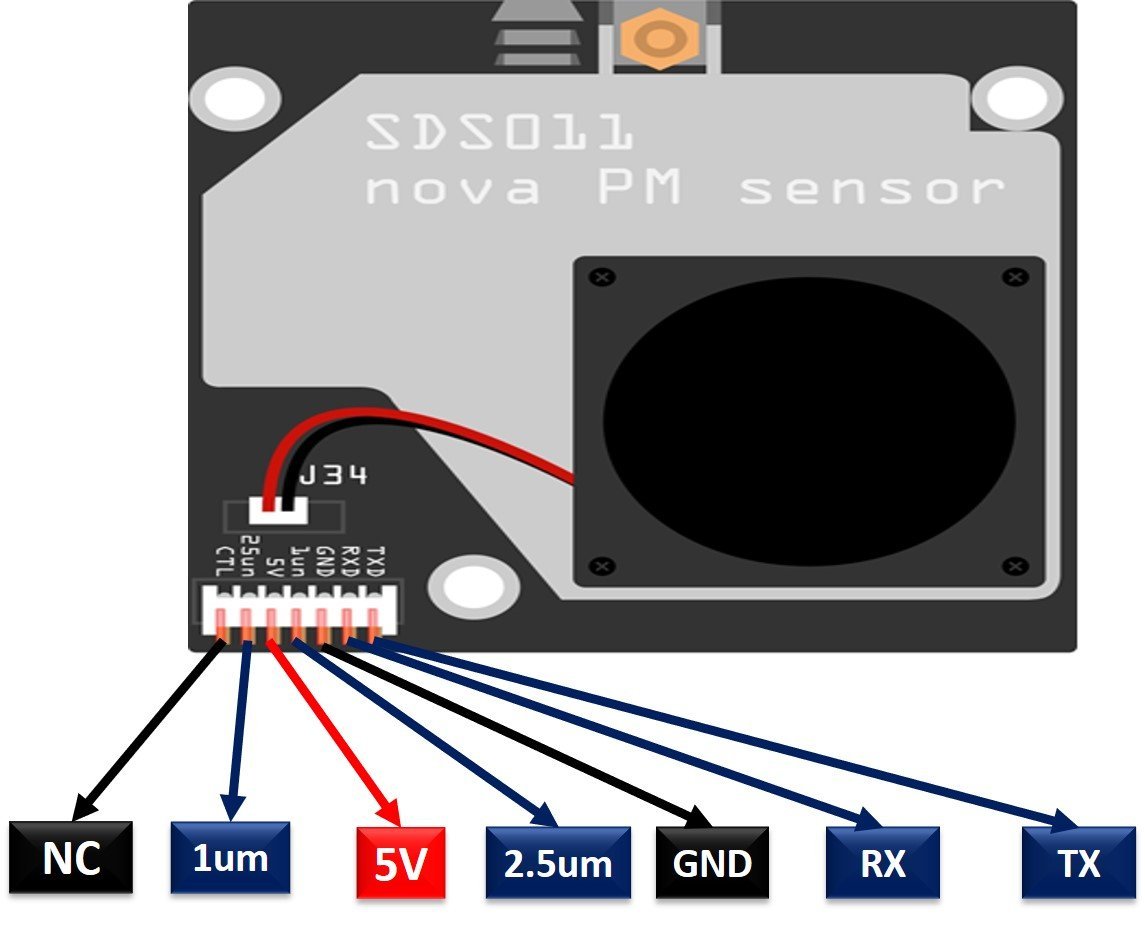
SDS011 Dust Sensor Pin Configuration Details
| No. | Pin Name | Function |
|---|---|---|
| 1 | NC | No connection/Not used |
| 2 | 1μm | Range of PM2.5 value (0-999μg /m³) and provide output in PWM form on this pin |
| 3 | 5V | Connect 5V to this pin to power dust sensor |
| 4 | 2.5μm | Range of PM10 value (0-999μg /m³) and provide output in PWM form on this pin |
| 5 | GND | Connect to ground terminal of power supply and common reference with Arduino or microcontroller |
| 6 | Rx | Receiver terminal of UART module and used to receive commands from computer or microcontrollers |
| 7 | Tx | Transmitter pin of UART and used to transmit output to the target device such as Arduino or other microcontrollers |
Note: SDS011 sensor can detect particulate matter (PM) in two ranges:
- Ultrafine dust particles with MP range in 0 – 2.5 micrometres (μm/m3) and pin2 of SDS011 sensor provides PM2.5 output in PWM format
- Fine dust particles with MP diagram in 2.5 – 10 micrometres (μm/m3) and pin4 of SDS011 sensor provides PM10 output in PWM format
The following figure shows the PWM output waveform for PM2.5 and PM10.
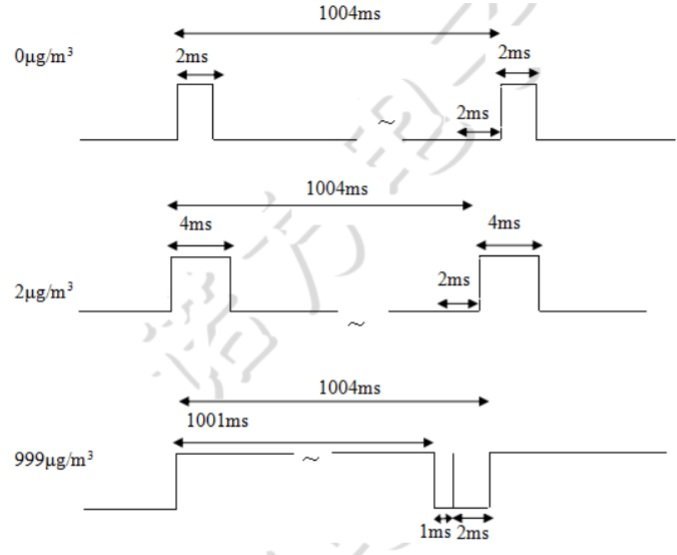
These equation are used to find PM2.5 and PM10 diameter dust particles in the air:
- PM2.5 value output equation: PM2.5 (μg /m3 ) = ((PM2.5 High byte *256) + PM2.5 low byte)/10
- PM10 value output equation: PM10 (μg /m3 ) = ((PM10 high byte*256) + PM10 low byte)/10
SDS011 Dust Sensor Features and Specifications
- Particulate matter range : PM2.5 and PM10 (0.0-999.9 μg /m3)
- Operating voltage range: 4.7 – 5.3V
- Low current consumption: 70mA±10mA
- Sleep current consumption is less than 4mA
- Serial data output frequency: 1Hz
- Minimum dust particle detection resolution: 0.3 μm
- UART Interface with personal computers and microcontrollers
- Manual and periodic hibernation to receive dust sensor output
- Laser scattering working principle
Alternative Options: GP2Y1014AU0F – Optical Dust Sensor
Note: For more technical specifications and features of the Nova PM SDS011 dust sensor, download its datasheet. The link to the datasheet is given at the end of the article.
How does SDS011 Dust Sensor work?
Nova PM SDS011 air quality measurement sensor internally consists of following components:
- Internal Fan
- Laser Diode
- Photo Diode
- Air Inlet and Outlet Valves
- Low Noise Amplifier circuit
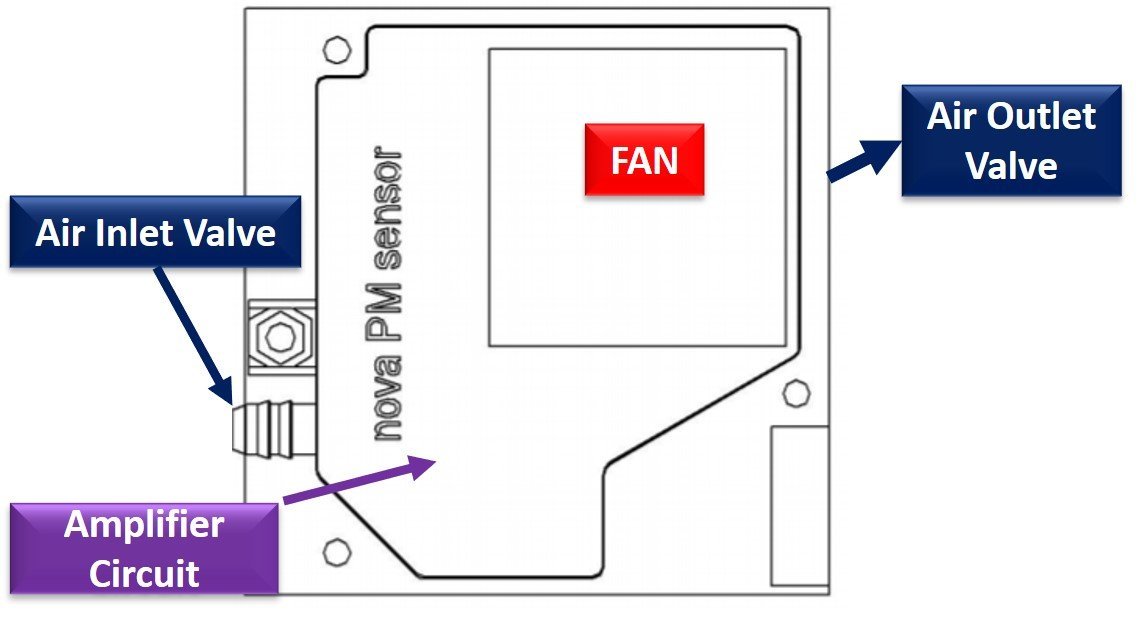
THE Nova PM air quality measurement sensor has a built-in air circulation fan. This fan helps to circulate the air through the inlet valve to the output valve of the dust sensor. Moreover, it circulates air with a laser diode which is used to determine the size of dust particles in the air. When air enters the dust sensor through an inlet valve ( as shown on the left-hand side of the SDS011 internal circuit) a laser diode illuminates the air and produces a scattered light. In response, the photodiode detects this scattered light and converts it into electrical signals. After that these electrical signals are amplified through an amplification circuit and processed to get an amount of PMis in the air that is the number and diameter of dust particles.
Interfacing with Microcontrollers
To interface SDS011 dust sensor with microcontrollers, we can use UART output pins of Nova PM sensor such as RX and TX. Hence, a microcontroller having a UART serial communication port can be easily interfaced and used to get dust particles concentration from SDS011 sensor. Sensor Tx and Rx pin operate on 3.3V logic signals but they are 5volt signals tolerant.
The most important point to consider while interfacing it with microcontrollers is that the lifetime of this sensor is 8000hours. That means if you want real-time data from the Nova PM sensor continuously, the expected lifetime of the sensor will be less than one year. In this configuration, it measures dust concentration at the frequency of 1time per second. On the contrary, if real-time data is not the requirement of your project, you can take measure twice per minute and it will increase the lifetime of the Nova PM sensor.
Applications
- Air Quality Monitoring
- Filters
- Air Purifiers
2D Model
The following figure shows the two dimensional diagram of SDS011 Nova PM sensor. It becomes very handly while designing PCB footprint.
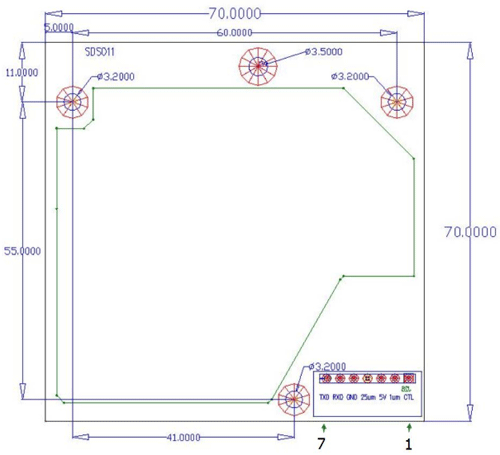

Dear Sir, Madam,
A question about the Dust sensor Nova PM SDS 011.
How to connect this sensor directly to my laptop vis the usb cable which is deliverd by the sensor? If this is possible what do i need to read out the data out the sensor to display it on my laptop display?
I tried it with the laptop don’t see the sensor so i would expect i do something wrong there my question.
So your reactie in advance and best reagrds,
Martinus Regterschot